Diesel Locomotive Classes – Broad Gauge
On this page- Mixed Use Locomotives
- Dedicated Passenger Locomotives
- Dedicated Freight Locomotives
- Shunting Locomotives
Information on metre gauge and narrow gauge diesel locomotives can be found on this page.
Note: Class names for mainline diesels are according to the new classification scheme, with references to the class names in the old system for those classes that were renamed, or for older classes that are out of use. See this page for an explanation of the new and old schemes.
Mixed Use Locomotives
(Class name carried over from old system.) 1957 ALCo models ("World Series" DL500 or 'FA' loco), Co-Co 12-cylinder 4-stroke turbo-supercharged engine; 1950/1830 hp. 100 of these were supplied in all. Initially (1957-1958) 20 were supplied and used for ore/coal freight on SER, but later also used for the first dieselized expresses on ER and SER, e.g., the Howrah-Madras Mail. The remaining units of this class arrived in 1959.
WDM-1 locos had Co-Co wheelsets (thus differing from FA units in other countries). There was also a dual-cab variant, though details (how many, sub class etc.) are not known.
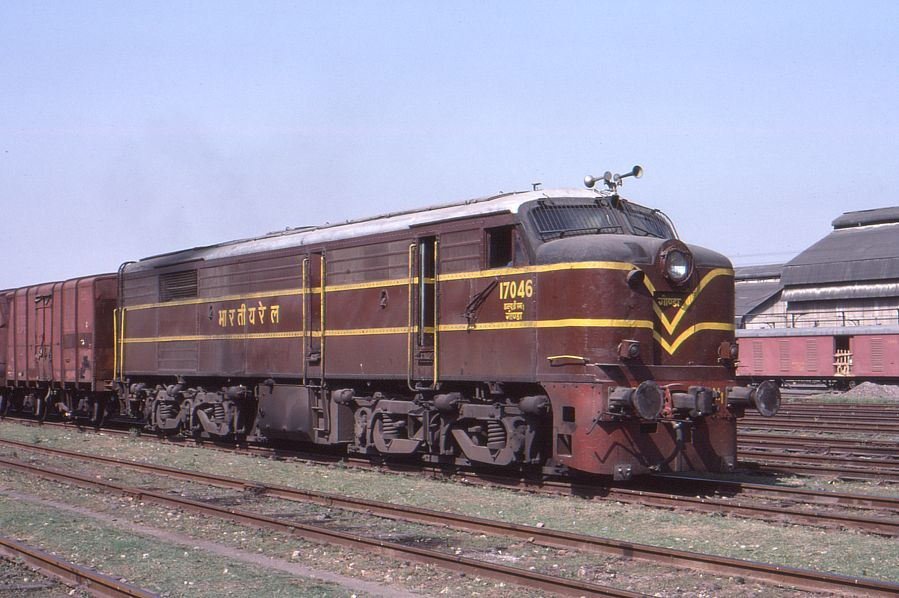
In the late 1990s, the remaining units were all in SER, based at Bondamunda and Waltair and relegated to shunting or piloting duties as they were withdrawn/condemned. There also used to be some at Gonda and Gorakhpur, used for carrying sugarcane traffic.
The very first WDM-1 (#17000) is preserved at the National Rail Museum.
| Builders | ALCo |
| Engine | ALCo 251B, V-12 four stroke diesel; 1000rpm max, 400rpm idle; 228mm x 266mm bore/stroke; compression ratio 13:1; centrifugal pump cooling system (2457l/min @ 1000rpm), fan driven by eddy current clutch (76hp @ engine rpm 1000). |
| Governor | GE 17MG8 |
| Transmission | Electrical, GE GT-518 traction generator |
| Traction Motors | GE 761A1 |
| Horsepower | 1950hp (1830hp site rating) |
| Axle Load | 18.6t |
| Bogies | Pennsylvania type cast steel Co-Co |
| Weight | 111.2t |
| Tractive Effort | 27.9 tons at 25% adhesion |
| Max. Speed | 105km/h |
(Class name unchanged after reclassification.) 2600 hp ALCo models (RSD29/DL560C). Co-Co, 16-cylinder 4-stroke turbo-supercharged engine. The first units were imported fully built from Alco in 1962. After DLW was set up, 12 of these were produced from kits imported from ALCo (order no. D3389). After 1964, DLW produced this loco in vast numbers in lots of different configurations. This loco model was IR's workhorse for the second half of the 20th century, and perhaps the one loco that has an iconic association with IR for many people. These locos were gradually converted to higher output variants (see below) throughout the early and late 2000s. As of January 2021, only 10 of the 2600hp version remain, mostly doing inferior duties.
These locos have a max. speed of 120km/h. There are generally speaking no restrictions for running with the long hood leading, although in some cases the practice was to limit it to 100km/h. The gear ratio is 65:18.
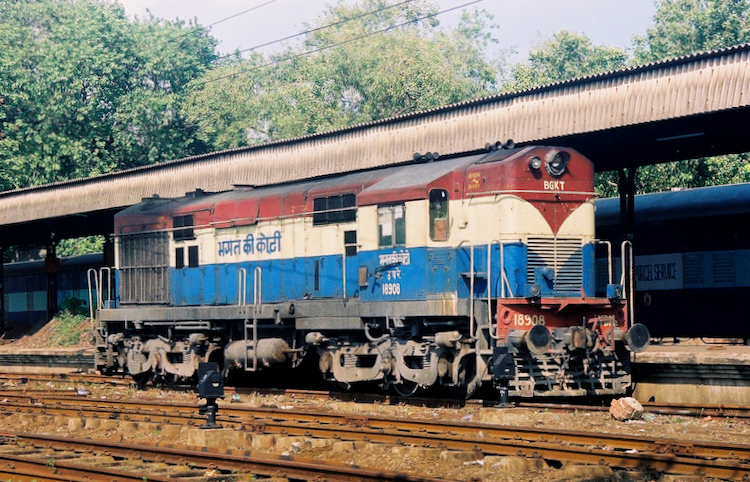
The original ALCo designs had a 10-day, 3000km maintenance schedule, which was later extended by some modifications to a 14-day schedule. Gradually, the schedule extended to 30 days by increasing the capacities for various fluids (lubrication oil, etc.), and improving some bearings (mainly, using roller bearings for the suspension).
The first one supplied by ALCo was #18040. This is now preserved at the National Rail Museum. The second one from ALCo, #18041, was in use until 2005 at the Kalyan shed. The first WDM-2 built by DLW, #18233, was at Andal shed. The last WDM-2's were in the 16000 series. The very last one was #16887.
The classification WDM-2A was applied to those that were re-fitted with air brakes (most of these therefore had dual braking capability), while WDM-2B was applied to more recent locos built with air brakes as the original equipment.
A few WDM-2 locos downgraded for shunting duties have been seen marked with a WDM-2S class name; e.g., Itarsi and Kurla. A few have also been spotted bearing the class name WDS-2, e.g., those at the Kalyan shed where they were used for shunting. These appear to be quirks of the local shed staff and not officially recognized classifications.
Only one WDM-2 loco (#16859, Ernakulam shed) is known to have had cab air-conditioning fitted. This was the first loco to have air-conditioning in India; this was done by the ERS shed in 1997 right after receiving the loco from DLW, but it was disabled later as the auxiliary alternator proved too weak to run the air-conditioner well.
A few WDM-2 locos of the Erode shed were modified and sported a full-forward cab (#17544) at one end, with the dynamic brake grid, blower, etc. moved between the cab and the traction alternator.
Variants
'Jumbos': A few locos of the WDM-2 class produced in 1978-79 had a full-width short hood; these were unofficially termed 'Jumbos' by the crew. Serial numbers around 17796 or so to about 17895 or so. These were apparently produced with the idea of improving the visibility for the drivers, but it was learned later that it did not make much of a difference under the typical operating conditions of these locos. Some of these were later modified to have narrower short hoods to look more like the other WDM-2's. Two locos, #17881 and #17882, were trial locos produced by DLW when they were considering shutting down 'Jumbo' production; these look like ordinary WDM-2 locos, even though there are other Jumbos with higher road numbers than them. 'Jumbos' were either condenmed or converted to WDM-3A with regular hoods.
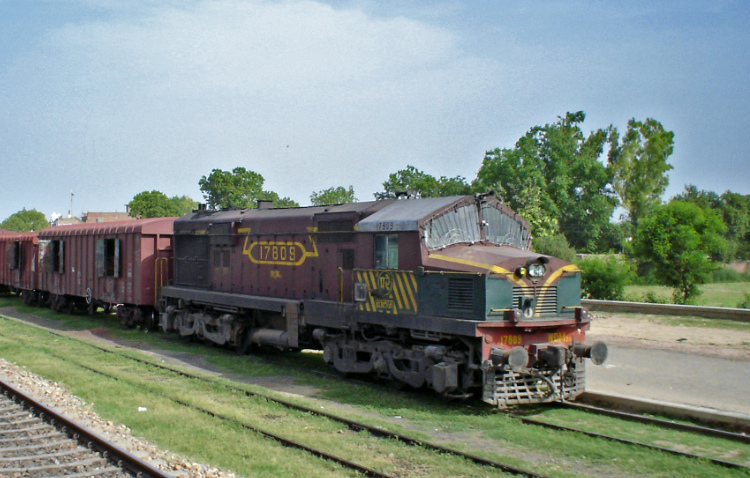
WDM-3A: From about 2000 to 2015, DCW Patiala rebuilt older WDM-2 units to class WDM-3A/WDM-2C specifications. They look very similar to WDM-2's, except for a bulge on one of the doors of the hood; this is due to the presence of a centrifugal fuel filter which moved there because the model required larger aftercoolers. There are some other slight differences in appearance. These units have a GE turbocharger and a different expressor with integral air drying facility. They have a Woodwards governor which leads to even running and idling, and (to the great disappintment of Alco smoke fans) reduces the amount of black smoke during intense acceleration. These also have roller bearings for the suspension, improving on the longstanding problem of bearing failures on the regular WDM-2 model.
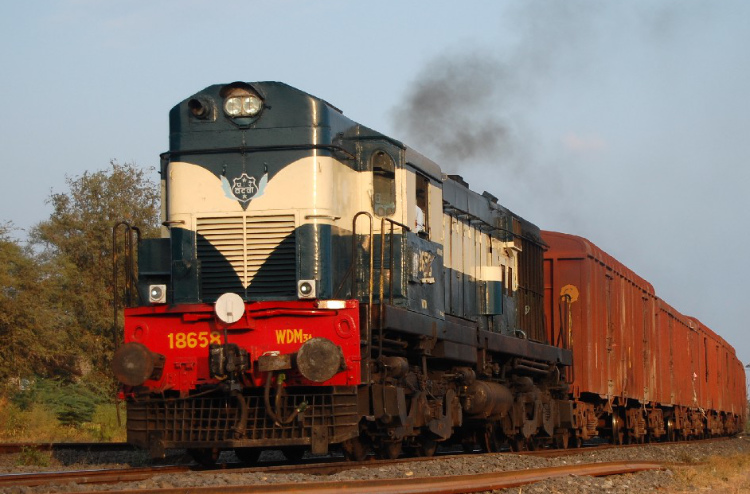
| Builders | ALCo, DLW (BLW) |
| Engine | ALCo 251-B, 16 cylinder, 2600hp with Alco 710/720/?? turbocharger. 1000rpm max, 400rpm idle; 228mm x 266mm bore/stroke; compression ratio 12.5:1. Direct fuel injection, centrifugal pump cooling system (2457l/min @ 1000rpm), fan driven by eddy current clutch (86hp @ engine rpm 1000). |
| Governor | GE 17MG8, Woodwards 8574-650 |
| Transmission | Electric, with BHEL TG 10931 AZ generator (1000rpm, 770V, 4520A) |
| Traction Motors | GE752 (original Alco models) (405hp), BHEL 4906 BZ (435hp) and 4907 AZ (435hp, with roller bearings) |
| Horsepower | 2600hp (2430hp site rating) |
| Axle Load | 18.8t |
| Bogies | Asymmetric cast frame trimount Co-Co |
| Weight | 112t |
| Starting TE | 30.4t, at adhesion 27% |
| Max. Speed | 120km/h |
| Length Over Buffers | 15862mm |
Made by DMW, Patiala, these are IR's only multi-genset locos. 3 Cummins QSK-19 6-cylinder 4-stroke engines on high-adhesion modified ALCo Co-Co bogies for a total of 2400hp. 65:18 gear ratio. 5000 litre fuel tank. Microprocessor controlled for various diagnostics and operations.
Inpsired by North American genset locos, these were designed to reduce fuel consumption and maintenance costs associated with regular large block prime movers. Only two (#80000 and #80001) were built by DMW in 2013 and feature many American design cues including the hood, marker lamps, number plates, warning bells and multi-chime horns. Initially allocated to Itarsi shed, they've since been transferred to Vatva.
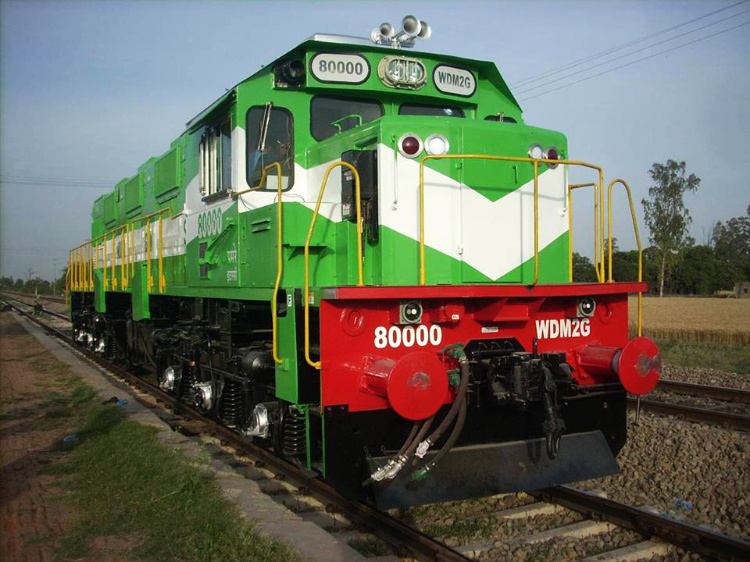
This class never entered serial production because of a reduced need for lower power locomotives and extensive electrification.
| Builders | DMW, Patiala |
| Engine | 3 Cummins QSK-19, 6-cylinder, 4-stroke (each 800hp) |
| Transmission | Electric, with 740 RSL4046 alterator |
| Traction Motors | BHEL 4907 AZ |
| Horsepower | 2400hp (2150hp site rating) |
| Axle Load | 19.5t |
| Bogies | High adhesion fabricated Co-Co |
| Weight | 117t |
| Starting TE | 37 tons at 32.8% adhesion |
| Max. Speed | 120km/h (designed for 135km/h) |
| Length Over Buffers | 17350mm |
(Old class name, nothing to do with newer WDM-3A class.) These were rare diesel-hydraulic locomotives made by Henschel (model DHG2500BB), delivered between August 1970 and May 1971. Mercedes Benz MD108DZ20 engines (600-1600 RPM) on Bo-Bo bogies. 2500hp. Only a total of 8 were produced. The first two had Maybach Mekydro hydraulic transmission, while the rest of them had an indigenously developed Suri hydro-mechanical transmission. They were all based at the Gooty shed, IR numbers 18515-18522. Mainly used on freight services within SCR, though they saw some passenger train haulage in the late 1970s.
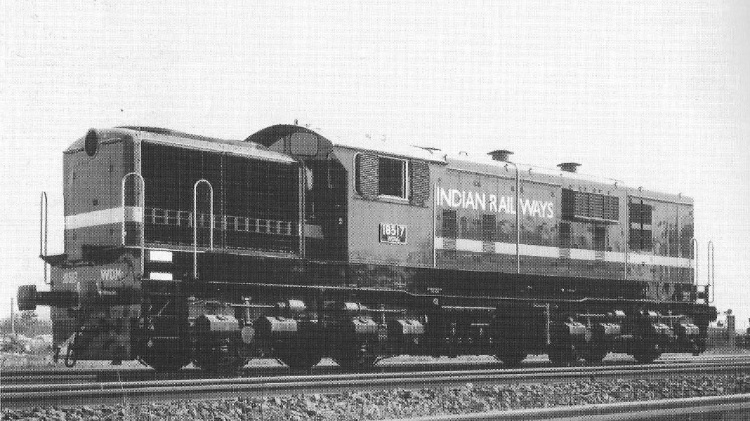
These locos were failure prone and never delivered on their promise of better fuel efficiency and lower maintenance. In fact, reports suggest a 20% higher consumption than the WDM-2. The Suri transmission also had performance issues and in 1974, all locomotives were converted to Mekydro hydraulics. They were withdrawn from active service in 1990 and scrapped in 1996.
| Builders | Henschel |
| Engine | Mercedes Benz MD108DZ20 |
| Transmission | Hydraulic; Maybach Mekydro or Suri |
| Horsepower | 2500hp |
| Axle Load | 19t |
| Bogies | Bo-Bo |
| Weight | 76t |
| Starting TE | 22 tons at 33% adhesion |
| Max. Speed | 120km/h |
| Length Over Buffers | 16234 mm |
These 3100hp locos are more powerful versions of the WDM-2. The first one was delivered on August 22, 1994 by DLW. They were classified as WDM-2C, but later became WDM-3A when naming was reorganized. A total of 143 originals were built (in addition to over a 1000 rebuilt to this specification). First 57 units featured a rounded profile on the short hood (affectionately called "Baldies" by railfans). The rest of the units have the regular square profile of WDM-2. The early units also featured left-hand seating for the pilot, but later reverted to right-hand. The early versions also featured a wheel for notch control rather than the usual stalk.
ALCo 251B 16-cylinder engine, tweaked to provide 3100hp (later 3300hp), 5000 litre fuel tank, ABB or Napier turbochargers. ALCo trimount Co-Co bogies. Gear ratio 65:18 as with the WDM-2. Early units were air-braked, but many later provided with dual brake capabilities to handle freight. All are now air-braked. These locos are capable of a top speed of 120km/h.
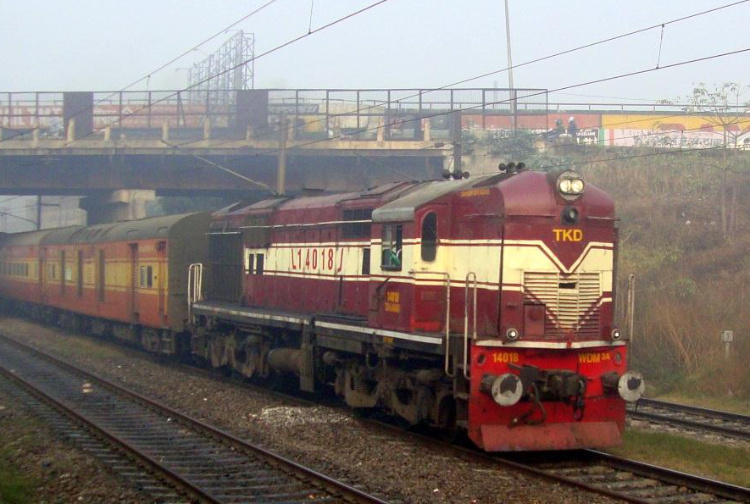
Towards the end of the 1990s, DMW Patiala started rebuilding WDM-2 locos that needed mid-life rehabilitation to the specifications of the WDM-3A (see WDM-2 above). These rebuilt locos were also classified as such. The vast majority have an "R" as a number suffix (for e.g #18555R) to indicate the rebuilt nature. These locos form the bulk of the class these days with over a 1000 of them built until 2015. Over the course of the conversions, many changes were incorporated including an updated power pack of 3300hp, relocating the dynamic brake resistor assembly to the roof of the short hood, provision of an auxiliary power unit etc. Some original WDM-3A made in the 1990s were also rebuilt in this style.
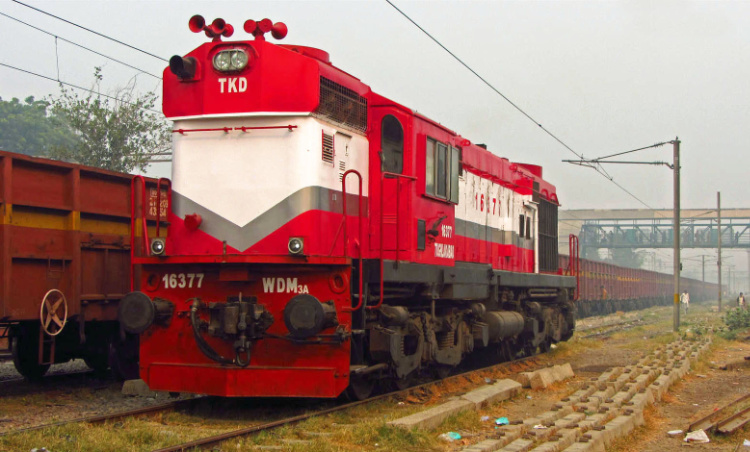
Variants
WDM-3C: These were a short-lived, temporary class that featured an upgraded version of the ALCo 251C engine. Power increased to 3300hp. When the experiment was deemed a success, the upgraded power pack began to be installed in locos coming in for their rebuild. Confusingly, these more powerful locos retained the 3A class moniker, with the rest of the 3C's also being renamed back to 3A.
| Builders | DLW, DMW |
| Engine | Upgraded (by DLW) ALCo 251-B (16 cylinder), 3100hp (2900hp site rating) early models, 3300hp from 2003, 1050rpm max/400rpm idle; direct fuel injection. Cooling and fans as with WDM-2. ABB VTC304-15 or Napier NA 295 IR turbocharger. |
| Governor | Woodwards 8574-650 |
| Transmission | Electric, with BHEL TA 10102 CW alternator, 1050rpm, 1130V, 4400A. (Early models used BHEL TG 10931 AZ alternator) |
| Traction Motors | BHEL 4906AZ (older models), BHEL 4907AZ (newer units) |
| Horsepower | 3100hp (2900hp site rating), 3300hp (3007hp site rating) |
| Axle Load | 18.8t |
| Bogies | ALCo trimount Co-Co |
| Weight | 112.8t |
| Starting TE | 30.4t, at adhesion 27% |
| Max. Speed | 120km/h |
| Length Over Buffers | 15862mm |
A higher-powered version of the basic WDM-3A class, these locos have a 3300hp powerpack. The engine is an enhanced version of the 16-cylinder Alco 251C model. Max. speed 120km/h. Fabricated (welded) Alco High-Adhesion Co-Co bogies. Starting TE is 36036kgf (353kN). Lighter weight BHEL 5002 BY traction motors.
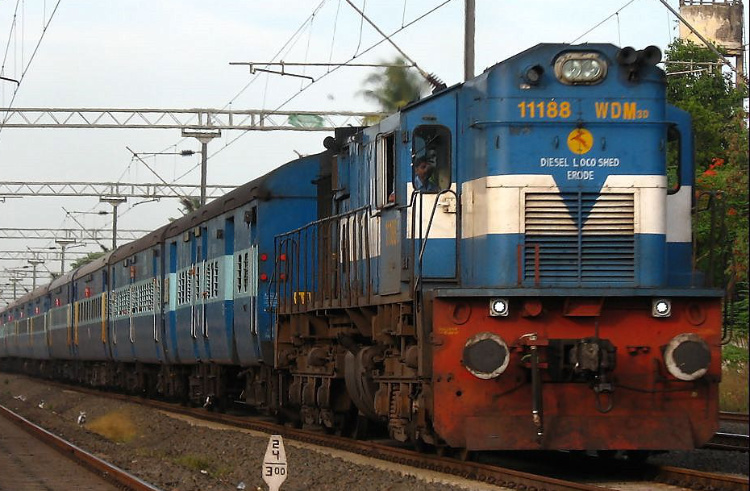
Air cylinder under footboard, WDP-4 style fuel tanks, engine doors like WDP-4, marker lights outside cabin doors, electronic horn. Improved high adhesion bogies with stem type vertical and lateral dampers in place of 'eye' type for easier maintenance. High capacity buffers. Components and auxiliaries improved with the aim of making the duty schedule longer between maintenance visits to the shed. Fuel tank capacity 6000l, engine oil sump capacity 1270l.
The WDM-3D is the result of a concerted effort by DLW to incorporate some of the best features of the GM/EMD locomotives (WDP-4/WDG-4) into the proven ALCo base technology with which DLW has enormous experience. Early versions use General Electric's 'Bright Star' microprocessor control system to monitor and control various engine parameters, to detect wheel slip, and to supply power in a phased manner to the traction motors under slipping conditions. Newer ones use a similar system from Medha Servo Drives. Early versions had the dynamic brake resistor in the short hood (like old WDM-2/3), but later ones have had it moved to the roof.

The class name 'WDM-3D' would normally imply 3400hp, however this loco is rated at 3300hp, just like the WDM-3C. Originally when this was developed, it was named WDM-3C+, but apparently IR decided that this was too confusing, and re-classified it as 'WDM-3D' to avoid confusion with the WDM-3C class.
Variants
WDM-3B: These were a small batch of locos developed in 2005 to address certain issues with the microprocessor control in the WDM-3D. These use what IR calls 'E' Type Excitation for control and diagnostics. They share the same bogie design (high-adhesion ALCo) of the 3D, but have the lower rated engine from the WDM-3A. Only 23 were made, with many being named "Gajraj" by various sheds. All locos have since been converted to WDM-3D with updated engines.
WDM-3E: 8 of these were made around 2008. DLW squeezed out 3500hp from the ALCo 251 block, and made the bogies lighter by removing the equalizing and compensating mechanisms. Otherwise they share the rest of their design and components with the WDM-3D. Some documents redesignated this variant as "WDM-3D without equalizer" which creates confusion. Top speed restricted to 105km/h.
WDM-3F: DLW's final experiment to deliver more power from the ALCo 251 engine. These locos have 3600hp, but otherwise share the bogie design with the 3E variant noted above. Only four were made (#11287, #11321, #11325, #11342), with #11287 having a rounded, quasi-streamlined hood reminiscent of the original WDM-2C/3A. Rest of the class shares its looks with the WDM-3D. Axle load of 20t. GE 752 traction motors with the rest of the electricals also predominantly GE. Top speed restricted to 105km/h.
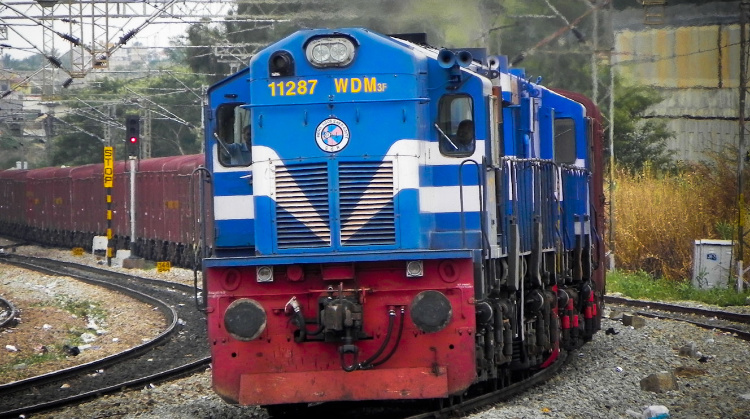
| Builders | DLW |
| Engine | Upgraded (by DLW) Alco 251-B (16 cylinder), 3300hp with GE7S1716 turbocharger, 1050rpm max/400rpm idle; 228mm x 266mm bore/stroke; compression ratio 12.5:1. Direct fuel injection, centrifugal pump cooling system (2457l/min @ 1050rpm), fan driven by eddy current clutch (90hp @ engine rpm 1050). |
| Governor | Woodwards 8574-650 |
| Transmission | Electrical, with BHEL TA 10102EV traction alternator |
| Traction Motors | BHEL 5002BY |
| Horsepower | 3300hp (3152hp site rating) |
| Axle Load | 19.5t |
| Bogies | HAHS Co-Co |
| Weight | 117t |
| Maximum TE | 38.6 tons at 33% adhesion |
| Max. Speed | 120km/h |
| Length Over Buffers | 17350mm |
(Class name carried over from old system.) There were 72 of these export model SD-24 GM-EMD locos, supplied in 1962. Rated at 2600hp and 140km/h. Co-Co, 16-cylinder 2-stroke turbo-supercharged engines. They were considered a potential alternative to the WDM-2 design from Alco and were superior in many ways, but eventually the ALCo loco won as GM did not agree to a technology transfer agreement.
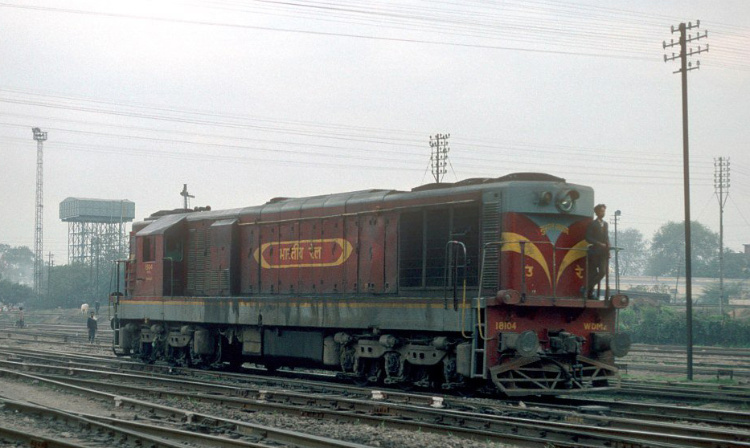
They are 2-stroke engines fitted with Woodward governors. All units of IR were equipped only for vacuum brakes. Top speed generally limited to 120km/h, although they were run at 130km/h regularly for the Howrah Rajdhani, and even run in some speed trials at 145km/h. Haulage capacity 2400t. The Co-Co bogies used for this loco were Flexicoil 'Mark 1' cast steel types.
IR numbers 18000-39, 18080-111. Interestingly, the gap in serial numbers corresponds to the 40 units of this model delivered by GM to Pakistan at the same time.
All were eventually based at NR's diesel shed at Mughalsarai. The Doon Exp. was one of the first to get these locos (it was also one of the first major trains to switch from steam). Most prominently, the Howrah Rajdhani was hauled by a WDM-4 at one time, as were many other prestigious trains (AC Exp. (now Poorva), Himgiri, and Kashi-Vishwanath Exps.). Later they used to haul local area passenger trains before being withdrawn by 2000. Two have been preserved (one at NRM, one at Lucknow Diesel Shed).
| Builders | GM-EMD |
| Engine | EMD 567D3 with EMD T16 turbocharger; 835rpm max/275rpm idle; 216mm x 254mm bore/stroke; compression ratio 14.5:1. Direct fuel injection, centrifugal pump cooling system (1325l/min @ 835rpm), AC motor fan driven (82.5hp @ engine rpm 835). |
| Governor | Woodwards |
| Transmission | Electrical, with EMD D-22 generator |
| Traction Motors | EMD D47B-1 |
| Horsepower | 2600hp (site rating 2400hp) |
| Bogies | Flexicoil 'Mark 1' cast steel Co-Co |
| Weight | 112.8t |
| Maximum TE | 28.2 tons at 25% adhesion |
| Max. Speed | 130km/h (restricted to 120km/h) |
(Class name carried over from old system.) These were very rare locos! DLW built just two of them (#18901 and #18902) in July 1981 and early 1982. They had short centre-cab with a long hood and a short hood. They were 1350hp Bo-Bo locos with the same inline 6-cylinder engine (Alco 251D-6 variant) and traction motors, and hood superstructure, as the YDM-4 locos, with a WDM-2 underframe. Known as 'Maruti' or 'chutka gari' by the staff, they were based at the Burdwan shed on ER.
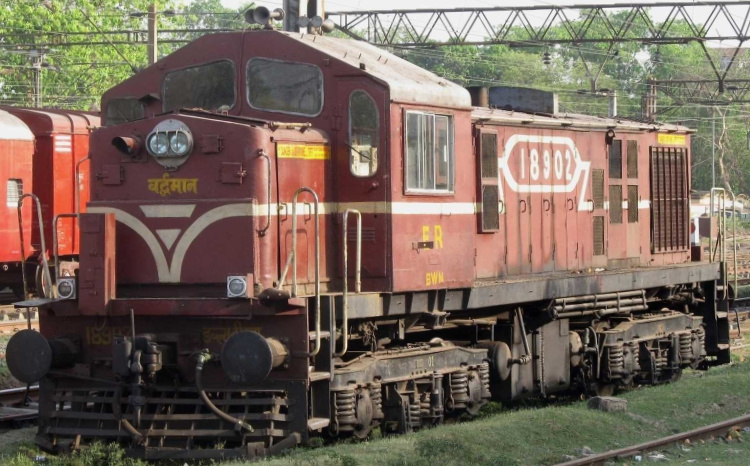
The power rating of the YDM-4 powerpack is too low to haul larger BG rakes, so it's not clear exactly what IR had in mind when these locos were designed and built. Perhaps they were to take on short-haul commuter and suburban services, a task which the DMUs and MEMUs are better suited. The Bo-Bo bogies of these locos were of a fabricated design, similar to those seen on the WDP-1, apparently not related to any other diesel loco bogies found on IR although perhaps loosely based on the Flexicoil models.
Both locos were withdrawn in 2011 and have been earmarked for preservation.
(Class name carried over from old system.) Fifteen of these Co-Co locos were built from June 1987 through 1989 for branch line services. They have a slightly different ALCo trimount bogie design, but share the rest of the shell design with WDM-2. The power-pack is a 12-cylinder ALCo 251B unit with an ALCo 520 turbocharger outputting ~ 2000hp. The first 10 have DC-DC transmission with BHEL 10931 generators, 105km/h top speed and no dynamic brakes (these can be spotted with no brake resistors in the short hood and cooling louvres). The rest have AC-DC transmission with BHEL 10105 alterators, dynamic brakes and limited to a top speed of 100km/h. All models had only vaccum brakes initially, but were converted to dual and finally only air brakes. 3200 litre fuel tank. Both batches have a 94:17 gear ratio.
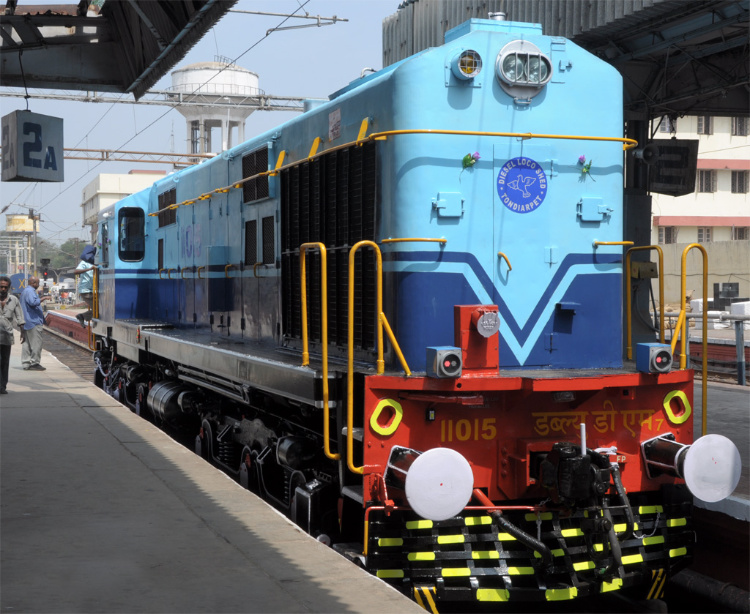
They were at Erode shed, but then were moved to Golden Rock and Ernakulam for a number of years, before finally being homed at Tondiarpet shed. They initially ran light passenger train loads, but these days are primarily used for shunting around Chennai. Two (#11003 and #11008) have been modified to run on bio-diesel.
| Builders | DLW |
| Engine | ALCo 251B, 12 cylinder, 1977hp with ALCo 520 turbocharger. 1000rpm max, 400rpm idle; 228mm x 266mm bore/stroke; compression ratio 12.5:1. Direct fuel injection, centrifugal pump cooling system (2457l/min @ 1000rpm), fan driven by eddy current clutch (86hp @ engine rpm 1000). |
| Transmission | DC-DC BHEL 10931 generator, AC-DC BHEL 10105 alterator |
| Traction Motors | BHEL 4501 AZ |
| Horsepower | 1977hp (1856hp site rating) |
| Axle Load | 16t |
| Bogies | Cast steel trimount Co-Co |
| Weight | 96t |
| Maximum TE | 25.9 tons at 27% adhesion |
| Continuous TE | 18.90 tons (DC-DC), 21.5 tons (AC-DC) |
| Max. Speed | 105 (DC-DC), 100 (AC-DC) |
Dedicated Passenger Locomotives
(Class name carried over from old system.) A poor adaptation of the WDM-2 intended for hauling commuter trains with small numbers of coaches, this model never performed well and has always had a lot of ride quality and maintenance problems. With a 12-cylinder engine and low overall weight, the decision was made to use a Bo-Bo wheelset for it, unsual for IR diesels. Homed at Tughlakabad and Vijaywada. Used mostly for ordinary passenger and works trains.
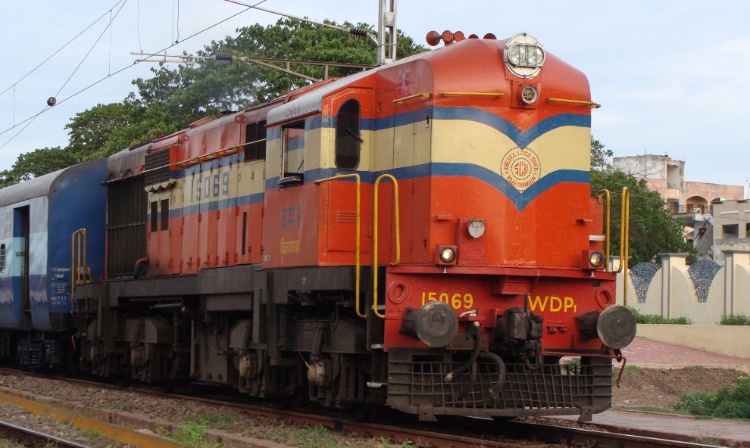
Rated at 2300hp. Bo-Bo fabricated bogies loosely based on the Flexicoil models. Most share the curved short hood profile of the early WDM-3A/2C. No dynamic brakes (and hence no cooling louvres for resistor grid in the short hood). Produced from April 1995, last loco on March 26, 1999.
Variants
WDP-1M: Starting 2013, to address issues with ride quality and bogie maintenance, DMW Patiala started modifiying and rebuilding WDP-1 locos. These rebuilt ones are designated WDP-1M and feature rubber springs instead of coil springs in the primary suspension, higher capacity hydraulic dampers and modified radiators etc., These locos also have the squared off short hood profile like older WDM-2.
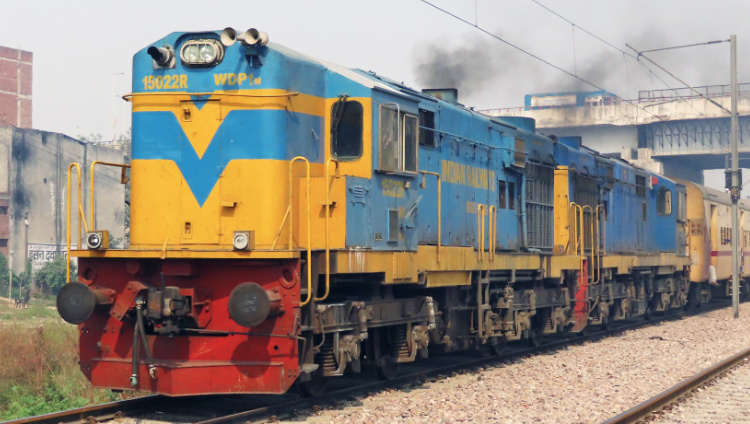
| Builders | DLW, DMW |
| Engine | Alco 251B 12-cylinder variant, 2300hp, with Napier NA 295 or ABB VTC304 turbocharger. 1000rpm max / 400rpm idle. Fuel injection, cooling, fans, governor as with WDM-2. 228mmx266mm bore/stroke. 13:1 compression ratio |
| Governor | Woodward |
| Transmission | Electrical, BHEL TA 10106 AZ alterator |
| Traction Motors | BHEL 4906 AZ |
| Horsepower | 2300hp (2231hp site rating) |
| Axle Load | 20t |
| Bogies | Fabricated Bo-Bo |
| Weight | 80t |
| Max TE | 20 tons at 25% adhesion |
| Max. Speed | 120km/h |
| Length Over Buffers | 14810mm |
(Old class name WDP-2) 3100hp dedicated passenger loco meant for high-speed operations. Twin full-forward cabs, streamlined design, Alco 251-B V-16 power unit, with an ABB/Napier turbo supercharger and provided with an electronic governor to control the engine's power output. BHEL/CGL traction motors with 22:61 gear ratio. Rated top speed is 160km/h (in both directions). Two-stage suspension with Flexicoil Mark V fabricated bogies (Co-Co). Air-braked.

First produced in October 1998, these are IR's attempt to a build a high-speed loco on the proven ALCo platform. However, they have issues with bogie maintenance and excessive oscillations at high speed, so are restricted to 120km/h. They also have problems with less than ideal insulation in the driving cab next to the radiators, leading to crew and railfans calling them "Toasters" because of the excessive heat. They are best known for hauling the Trivandrum Rajdhani over Konkan and Western Railway at 120km/h.
They are primarily homed at Tughlakabad (NR) and Kalyan (CR). Golden Rock (SR) also had a large holding of this class, but has steadily retired its fleet and as of October 2021, stopped commercial operations. #15501 is marked for preservation. The rest are expected to be scrapped.
| Builders | DLW |
| Engine | Alco 251B 16-cylinder, 3100hp. 1050rpm max / 400rpm idle. Napier NA 295 IR or ABB VTC304-15 turbocharger. 228mm x 266mm bore/stroke, 12.5:1 compression ratio. Unit fuel injection. Cooling system has centrifugal pump with 2457l/min capacity @ 1050rpm; fan driven by an Eddy current clutch (90hp @1050 rpm) |
| Governor | Woodward |
| Transmission | Electrical, with BHEL TA 10102 BW alternator (1050rpm, 1130V, 4400A) |
| Traction Motors | BHEL 5002AZ, CGL 7362 |
| Horsepower | 3100hp (3007hp site rating) |
| Axle Load | 19.5t |
| Bogies | Fabricated Flexicoil Mark 5 Co-Co |
| Weight | 117t |
| Max TE | 29250 tons at 25% adhesion |
| Max. Speed | 160km/h |
These are GM EMD GT46PAC locos. 4000hp locos with the 16-cylinder EMD 16-710 (16-V-710G3B-EC) turbocharged engines (AC-AC transmission) with unit fuel injection. The bogies are GM's light-weight cast HTSC bogies similar to those of WDG-4 locos (see below) but meant for passenger use. They have an interesting Bo1-1Bo wheel arrangement. Max. speed 160km/h, although in trials it has been reported to have run at 180km/h. Early versions had the EM2000 microprocessor systems for diagnostics and control, though later units have Siemens and Medha systems. Electro-pnuematic Knorr (NYAB) computer control brakes with fully blended dynamic and air brakes. Two GE traction control convertors (one per bogie) with GTO. #20040 homed at KJM shed is the first IGBT based WDP-4. The traction conversion system was supplied by Siemens.
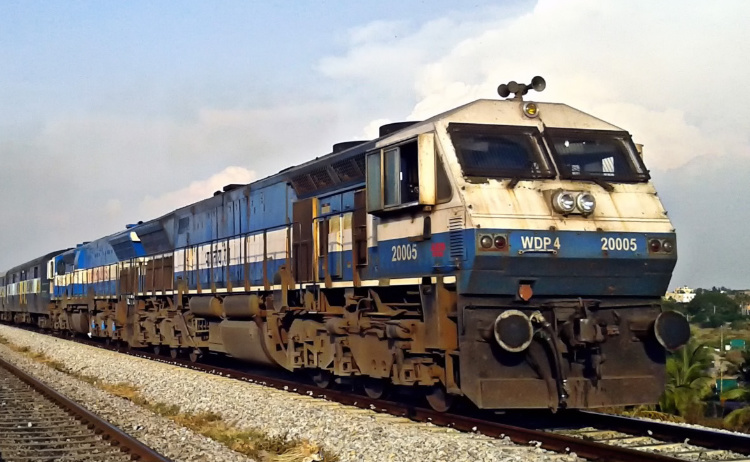
Starting in June 2001, 10 of them (#20000 to #20009) were provided by GM, operating out of Hubli (but frequently seen at Guntakal, Gooty, Bangalore and Secunderabad). In April 2002 DLW started producing these locomotives with 20011, 20013 and 20014 being assembled from completely knocked down kits. 20012 was the first indigenously manufactured WDP-4 and features a modified fibre glass shell over the standard cab. DLW had plans only for these 5 in its first production batch, but started to produce them in large numbers starting in late 2003.
These locomotives have received criticsm for being difficult to drive long hood leading because of visibility issues due to the radiator design. In order to address this, some locos have a widened cab profile similar to the WDP-4B (see below).
| Builders | GM-EMD, DLW |
| Engine | GM-EMD 16-710G3B; 16-cylinder, 2-stroke; 4000hp; 230 x 279mm bore/stroke, 16:1 compression ratio. 904 rpm max / 200 rpm idle |
| Governor | Woodward |
| Transmission | Electric (AC - AC), with GM TA-17 traction alternator (CA-6B companion alternator) |
| Traction Motors | Siemens 1TB-2622-0TB02; 3-phase AC induction, axle hung, force air ventilated |
| Horsepower | 4000hp (3939hp site rating) |
| Axle Load | 19.5t |
| Bogies | EMD high adhesion HTSC Bo1-1Bo |
| Weight | 115.8t |
| Starting TE | 27.5 tons at 35% adhesion |
| Max. Speed | 160km/h |
| Length Over Buffers | 19964mm |
Although the class designation makes it seem like a minor variant of the WDP-4 class, it has significant differences from it, being much closer to the WDG-4 class. The WDP-4B has 6 AC Siemens or EMD traction motors (Co-Co), an uprated GM-EMD 16-710 engine putting out 4500hp. Gear ratio of 17:77. Axle load of 20.2t. The WDP-4B also has a widened cab profile to enable better visibility in long hood leading operations (a complaint often associated with the WDP-4). Braking system similar to WDP-4.
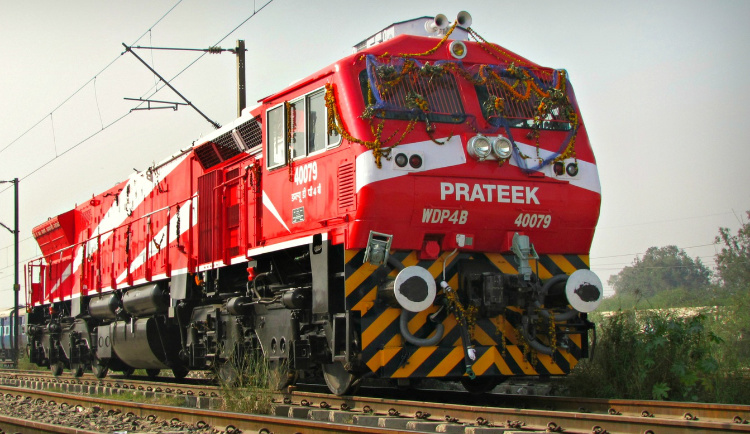
These locos were developed to address the relatively poor performance of the WDP-4 when hauling 24-coach trains on heavily graded sections. With 6 traction motors and a starting tractive effort of 40.7 tons, these perform much better in such conditions. Maximum speed is 150km/h, though operationally they run at 130km/h over certain sections of NR, NCR and WR etc. Initially two prototypes of the WDP-4B class were built using components for the WDP-4 class loco (#20047, #20075 - in the number series for the WDP-4 class). Serial production of these locos began in March 2010.
Many of the newer units have traction convertor control systems from Medha Servo Drives in which each motor has a convertor, rather than per bogie in systems made by Siemens or EMD. The advantage is that in case of failure of one or motors, others are still available, allowing the loco to reach its destination under reduced power. The control software has also been changed so as to squeeze out power at the top end of each traction motor under most conditions, unlike with the WDP-4 where the software was more constraining in terms of when it would allow maximum power to be drawn. The WDP-4B also has a provision for an inverter-driven head-end power unit, allowing running trains without a generating car (EOG) for hotel power, though these are not in use after experiments failed.
| Builders | DLW |
| Engine | Updated GM-EMD 16-710G3B; 16-cylinder, 2-stroke; 4500hp; 230 x 279mm bore/stroke, 16:1 compression ratio. 904 rpm max / 200 rpm idle |
| Governor | Woodward |
| Transmission | Electric (AC - AC), with GM TA-17 traction alternator (CA-6B companion alternator) |
| Traction Motors | Siemens 1TB2622- 0TA02, EMD A 2916-8 |
| Horsepower | 4500hp (4400hp site rating) |
| Axle Load | 20.2t |
| Bogies | EMD high adhesion HTSC Co-Co |
| Weight | 121.2t |
| Starting TE | 40.7 tons |
| Max. Speed | 150km/h design speed, 130km/h operational |
| Length Over Buffers | 19964mm |
These are dual-cab versions of the WDP-4B. The "4D" designation indicates dual cabs rather an increase in power over the base model. They share the same engine and other mechanical components with the WDP-4B. In addition to EMD and Siemens, traction motors for the WDP-4D are also supplied by Medha, BHEL (IM4507BZ) and Yongji (YJ157A). The two cabs are of unequal length – CAB-1 is 2377mm while CAB-2 (the radiator end) is 2232mm. This was done so as to keep within acceptable schedule of dimension limits on IR. These locomotives were designed to solve the persistent issue of visibility in the EMD locos when long hood leading. While the WDP-4B mitigated the issue with a widened cab, IR felt the problem needed a more permanent solution, and hence the WDP-4D.
Weight of the loco increases to 123 tons, with a corresponding marginal increase in axle load to 20.5 tons. Length over buffers is 23002mm. Cabs in later units are air-conditioned. They also feature a redesigned control stand by Medha with LCD displays and touch controls for certain functions (shared with the WDG-4D). Many locos also have GSM-R and GPS antennae to relay critical info and location data for use by maintenance and signalling staff.
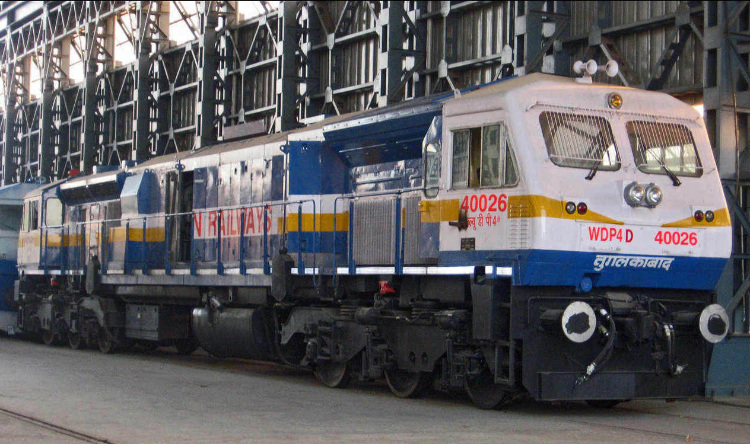
For other specifications, please check the WDP-4B class above.
Dedicated Freight Locomotives
(Old class name was WDG-2, new class name is WDG-3A.) This 3100hp model was developed in response to problem areas noted with the WDM-2, such as ride quality, lateral oscillations, and poor traction with heavy loads, especially under single unit working. This loco formed the backbone of diesel freight operations for close to a decade until the WDG-4 class took over. The updated power pack (designated 251B) was the first attempt by DLW to squeeze out more power from the ALCo 251 block. Better turbochargers (Napier or ABB) and large after coolers were incorporated to deliver the gains. Early models had BHEL 4906AZ traction motors, later ones had 4907AZ with roller suspension bearings. Some locos also feature Hirect self-cooled rectifiers. 74:18 gear ratio. High adhesion fabricated Co-Co bogies with two-stage suspension. Balancing speed of 69km/h with a 58 BOXN wagon load. Max. speed 100km/h.
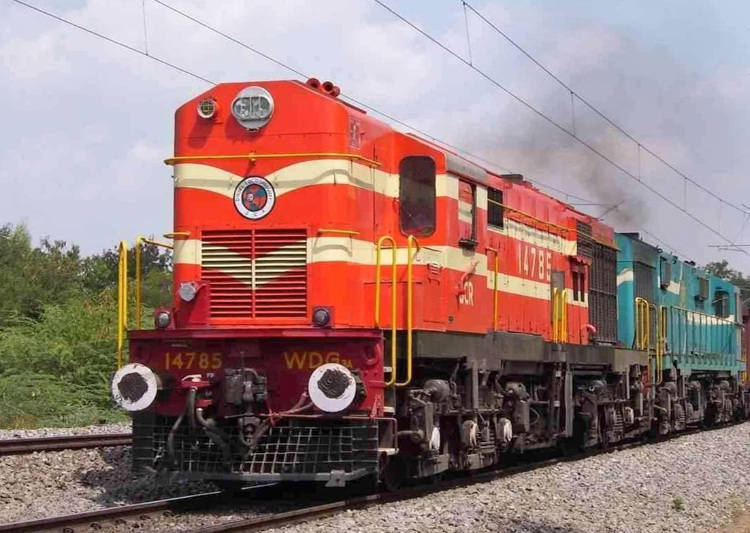
The first loco was delivered on July 17, 1995. Early versions had a rounded short hood profile, left-hand side driving, notch control via a wheel rather than stalk. Later versions reverted many of these changes to WDM-2 design. Newer units (1495x onwards) have microprocessor controlled governors and diagnostics. The first such, #14951 ('Garuda') was homed at Gooty. Models from 2009 onwards (and some rebuilt ones) feature dynamic brake resistors on the roof, an auxillary power unit in the short hood etc. making their appearance more like the WDM-3D.
Production of this class stopped in 2015 in favour of more EMD (WDG-4, WDG-4D) locos. Many have been scrapped in the past few years or sold to industrial customers. Some locos nearing their midlife were rebuilt into electric locos by utilising the shell, traction motors and other electrical systems. These are designated WGAC-3.
Variants
WDG-3C: A possible one off (only #14962 has been spotted, plate DG-3A-465, May, 2002) with a 3300hp power pack. Featuring a dark red livery, this loco is homed at Katni shed. In 2011, had engine derated to 2600hp and was redesginated to WDG-3A.
WDG-3D: Another one off with a possible 3400hp power pack. Only one, #13301, existed (at Vatva shed). Microprocessor governor, creep control, improved cab ergonomics. Improved components and auxiliaries geared towards a longer period between scheduled maintenance jobs. Has since been redesignated WDG-3A with a corresponding decrease in engine power.
| Builders | DLW |
| Engine | Upgraded (by DLW) Alco 251-B (16 cylinder), 3100hp (3007hp site rating), 1050rpm max/400rpm idle; direct fuel injection. Cooling and fans as with WDM-3A. ABB VTC304-15, Napier NA 295IR or GE7S 1716 turbocharger |
| Governor | Woodward |
| Transmission | Electric, with BHEL TA 10102 CW alternator (1050rpm, 1130V, 4400A) |
| Traction Motors | BHEL 4906AZ/4906BZ/4907AZ/4907BZ |
| Horsepower | 3100hp (3007hp site rating) |
| Axle Load | 20.5t |
| Bogies | High-adhesion fabricated Co-Co |
| Weight | 123t |
| Starting TE | 40.6 tons at 33% adhesion |
| Max. Speed | 100km/h |
| Length Over Buffers | 17850mm |
GM-EMD GT46MAC model dedicated freight locos introduced in 1999. GM-EMD 16-710 G3B engine with EMD 'G' turbocharger developing 4000hp (later models 4500hp), HTSC Co-Co bogies, 3-phase AC traction motors from Siemens originally, later models had EMD and BHEL. Original gear ratio 85:16, later 90:17. Axle load 21 tonnes. Max. speed is 100km/h. Early versions had GTO based Siemens SIBAS 16 traction control systems. Newer ones have IGBT based control from Medha and EMD. All locos feature a slip-control, with an electronic air brake system (KNORR-NYAB).
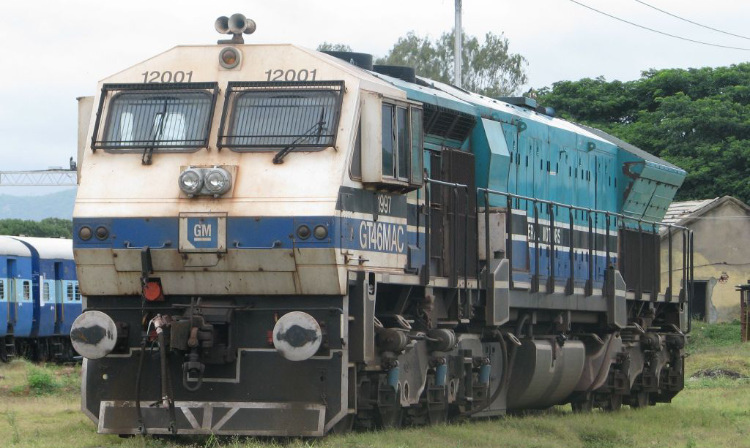
The first units from GM were #12001-12013 manufactured between 07/97 and 09/98; followed by a second order (#12014-12021) manufactured around 12/98. They were first allocated to Hubli shed to handle the heavy ore rakes from the mines around Hospet. DLW started serial production in 2002 with a great number made over the years. WDG-4 (and its dual cab WDG-4D variant) form the bulk of IR's diesel freight operations these days. They can start a load of 58 BOXN wagons on a 1 in 150 grade and have a balancing speed of 85km/h for such a load on level track.
Newer units have a widened cab profile to address visibility issues while long hood leading. They also have a redesigned control desk featuring LCD panels and touch interfaces for diagnostics and control.
| Builders | GM-EMD, DLW |
| Engine | GM-EMD 16-710G3B; 16-cylinder, 2-stroke; 4000hp (later updated to 4500hp); EMD 'G' turbocharger; 230 x 279mm bore/stroke, 16:1 compression ratio. 904 rpm max / 200 rpm idle |
| Governor | Woodward |
| Transmission | Electric (AC - AC), with GM TA-17 traction alternator (CA-6B companion alternator) |
| Traction Motors | Siemens 1TB2622-0TA02, Siemens 1TB2525, EMD A2916-8 |
| Horsepower | 4000hp (original), 4500hp (updated) |
| Axle Load | 21t |
| Bogies | EMD high adhesion HTSC Co-Co |
| Weight | 126t |
| Starting TE | 55 tons at 41% adhesion |
| Max. Speed | 100km/h |
| Length Over Buffers | 19964mm |
Dual cab variant of the WDG-4 with large changes. All locos in this class have the updated EMD 710G3B engine putting out 4500hp. Fully IGBT based traction control from Siemens, Medha and EMD. Max speed of 105 km/h. 21t axle load. Loco weight 130.2t. Maximum TE is 55 tons at 41% adhesion. Traction motors from Siemens, EMD, BHEL and Yongji. Alternators from EMD and BHEL.
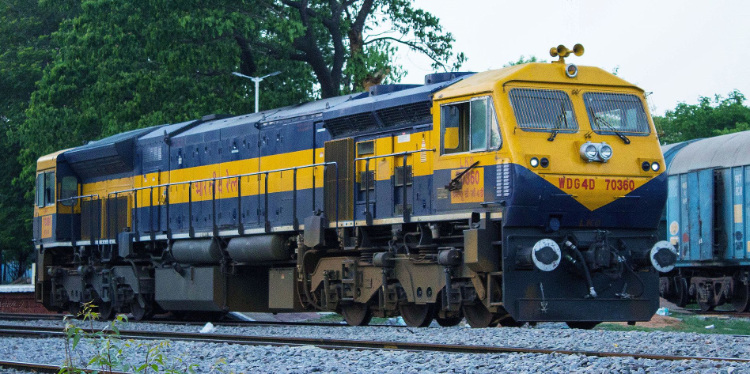
This class was developed alongside the passenger operations oriented WDP-4D to address visibility concerns when driving long hood leading. Cabs are of unequal length to conform to schedule of moving dimensions and feature a redesigned control desk from Medha. Most locos are in a deep blue, yellow band with yellow cabs livery. Locos equipped with Medha systems have individual traction control convertors for their motors while EMD and Siemens systems have one per bogie. The first prototype was manufactured in 2012 (plate no. WDG-4-668, running no. 12681) and assigned to Sabarmati shed. Serial production started in 2014 with running numbers beginning from 703xx onwards. Production stopped in 2017 on account of increased electrification and the commissioning of next generation GE locos.
For other specifications, please check the WDG-4 class above.
Dual cab freight locomotives based on GE's Evolution series, model ES43ACmi. Fully electronic fuel injected 12-cylinder, 4-stroke, 4500hp GEVO tier-1 engine meeting UIC-1 emission control norms. Light weight Co-Co bogies with 3-phase AC traction motors. Individual traction motor control via IGBT based convertor. 22t axle load; 132t loco weight; 6300l fuel tank. Starting TE of 544kN. Max. speed of 100km/h.
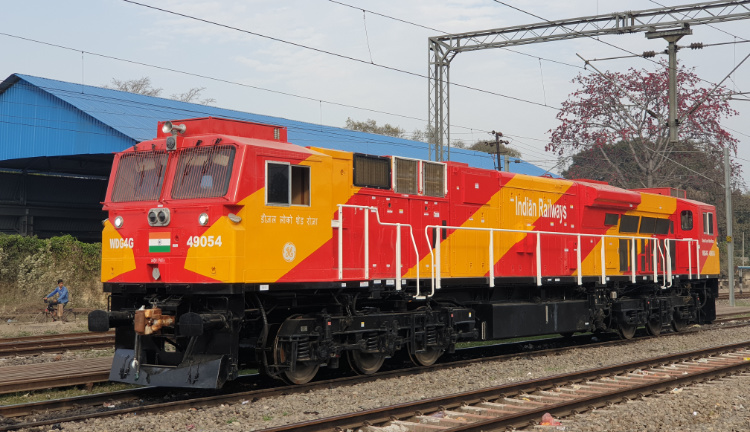
WDG-4G locos have a crash hardened data logger. Cabs are built of fire retardant materials and to EN12663 frontal collision specifications. They also feature fire extinguishers. Locos are equipped with GSM-R and GPS antennae for live remote monitoring of systems and location. They also feature enhanced crew comfort facilities like climate control, heated windshields, hot plates (for reheating food), water closet, better sound proofing and charging sockets for electronics.
These locos are built by the Diesel Loco Factory in Marhowra, Bihar, a joint venture between the Government of India and GE Transportation. The first 50 were imported from GE's Eerie, Pennsylvania, USA plant starting October 2017. GE plans to deliver 700 of these locos in total until 2029 and will also handle maintenance of them for 13 years. WDG-4G locos are homed at Roza (NR) and Gandhidham (WR) sheds.
Heavy haul freight locomotives based on EMD's SD80MAC. 710G3B-ES turbocharged 20-cylinder, 2-stroke engine with 5500hp output. These locos feature a fully AC transmission with 3-phase AC traction motors (EMD A2921-6). Gear ratio 91:20; HTSC fabricated Co-Co bogies; Loco weight 133.8t; Axle load of 22.3t; 7500l fuel tank. Starting TE of 560kN with a maximum speed of 90km/h. Traction convertors and switch gear is located in a single housing called "E-locker" for easier maintenance. Cabs are EN12667 crash compliant, feature TFT screens for diagnostics display, roof mounted air-conditioning and heating. Unusually for IR locos, they also have a toilet.
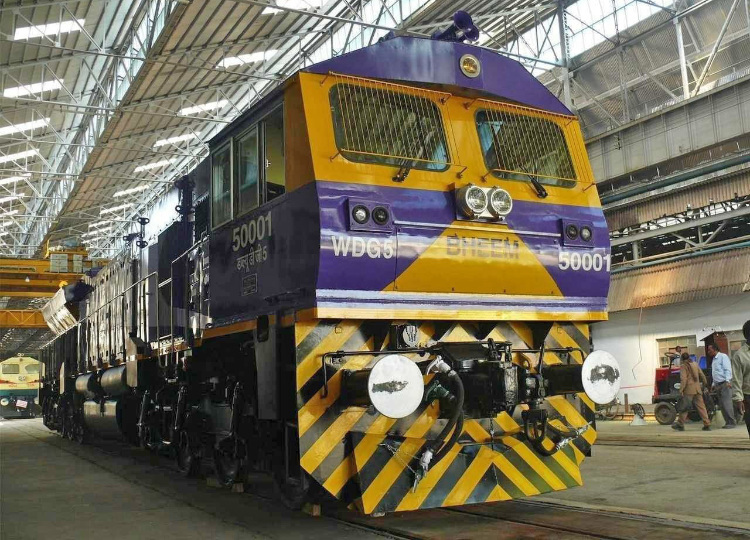
Only 7 were produced between 2012 and 2016. Class is named "Bheem" after a Hindu mythological character. The first one was at Lucknow shed, but all of them are now at Sabarmati (WR). Poor fuel efficiency of the prime mover meant this loco never entered serial production.
These are the most powerful diesel locomotives on IR. GEVO 16-cylinder, 4-stroke engine producing 6000hp. Fully electronic fuel injected and meeting UIC-I emmission control norms. Unlike their WDG-4G GE counterparts, these are single cab only. HTSC Co-Co bogies with 3-phase AC traction motors, individually controlled by IGBT based convertors. 23t axle load; 8350l fuel tank; 570kN starting tractive effort. Max speed of 65 km/h though designed for 100km/h.
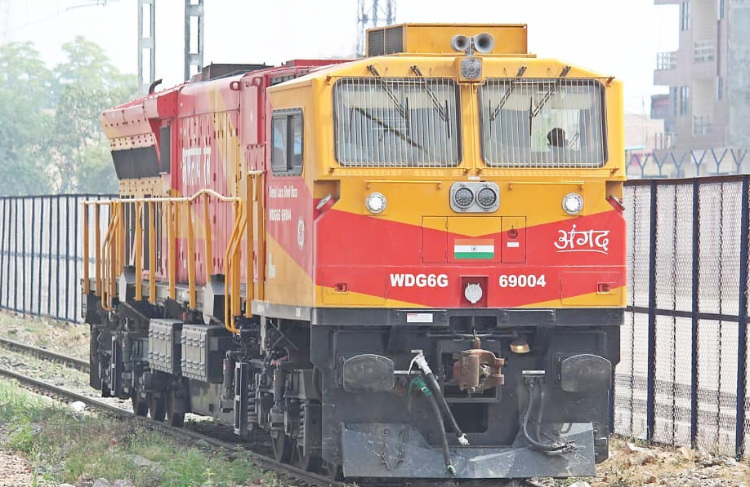
Like their lesser power counterparts these also have crash hardened real time data loggers with remote monitoring, climate control, hot plates and other crew comforts in the cab etc,. They also have a toilet. The first two were imported from GE's Erie, Pennsylvania plant in early 2019. They were then sent to Maula Ali shed in June 2019 for confirmatory oscillograph car tests between Parli and Vikarabad on the SCR.
300 of these locos will be manufactured in total at GE's Marhowra joint venture plant. GE will also provide maintenance for these locos for 13 years as per the agreement. All locos will be homed at either Roza or Gandhidham and primarily be deployed on the DFCs. IR numbering series 69xxx.
Shunting Locomotives
These are significant as the first widely deployed and successful diesel locos in India. The original locos of this class were a batch of 15 built by GE and supplied by USATC in 1944-45. Bo-Bo, twin 8-cylinder 4-stroke engines, 2 x 190hp. They had centre cabs and short and narrow hoods on either side, with two powerpacks (one under each hood). Most of these were with WR, although three units went to ER in 1945. They were very quiet in operation (in contrast to the WDS-2 locos, see below.) Some were working up till 1990 or so, when most were withdrawn or scrapped. One of them is preseved at DLW.
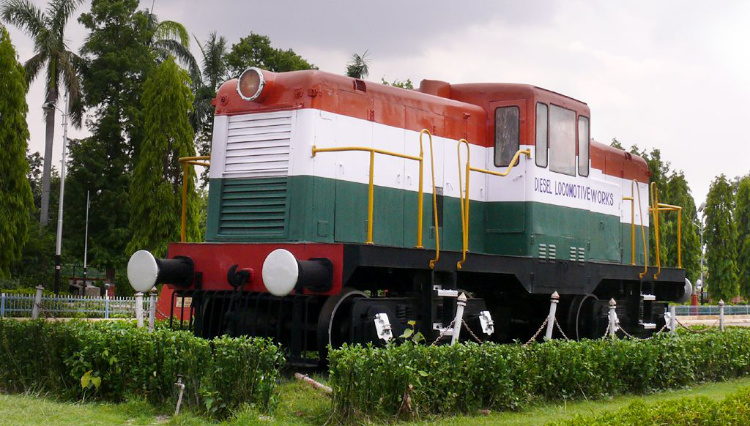
| Builders | GE |
| Engine | Turbocharged 8-cylinder, 4-stroke |
| Transmission | Generator (make unknown) |
| Horsepower | 386hp total |
| Bogies | Bo-Bo |
| Weight | 41t |
| Starting TE | 11.5t |
| Max. Speed | 56km/h |
Krauss-Maffei supplied these o-C-o bogie diesel-hydraulic locos in 1954-1955. 8-cylinder 4-stroke turbo-supercharged engine (MAN W8V-17.5/22A) with a Voith L37-V hydraulic transmission, delivering 440hp. Single cab placed asymmetrically (one hood short, one long). Most of these were with CR, and were known for being assigned to haul the 'Garbage Special' trains from Mahalaxmi to Chembur. These were very noisy in operation. Axle load 17.3t. They were all scrapped in the 90s. None has been preserved.
| Builders | Krauss-Maffei |
| Engine | MAN W8V-17.5/22A |
| Transmission | Hydraulic, Voith L37-V |
| Horsepower | 440hp |
| Axle Load | 17.3t |
| Bogies | o-C-o |
| Weight | 46t |
| Starting TE | 15.4t |
Built by Mak GmbH in 1961, these are o-C-o bogie locos, with Maybach MD-435 8-cylinder 4-stroke turbo-supercharged engines. 618hp. Side rod drives with Suri hydro mechanical transmission. Air brakes for loco, vacuum for train. These were all rebuilt with new engines and transmissions and reclassified as WDS-4C in 1976-1978. Max. speed of 65km/h for mainline and 27km/h for shunting.
| Builders | Mak GmbH |
| Engine | Maybach MD-435 |
| Governor | Maybach R321 |
| Transmission | Suri Hydro-Mechanical | Horsepower | 618hp |
| Axle Load | 19t |
| Bogies | o-C-o |
| Weight | 57t |
| Max. TE | 17.1t (shunting), 10.4t (mainline) both at 30% adhesion |
| Max. Speed | 65km/h (mainline), 27km/h (shunting) |
| Length Over Buffers | 10700mm |
CLW produced some of these diesel-hydraulic locos beginning in 1967-1968, but bulk production began only in 1969. (Some of the later units were probably built at the Diesel Loco Works, Varanasi.) Wheel arrangement: 'C'. 6-cylinder 4-stroke turbo-supercharged engines, initially MaK made, but later CLW. WDS-4 models are rated at 600hp, WDS-4A at 660hp, and WDS-4B at 700hp. (The same power-pack is used on all the models, upgraded for each.)
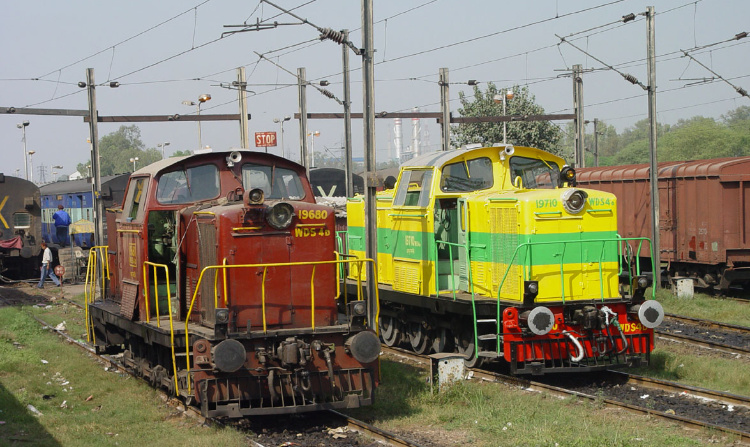
Many of these were used by public-sector units and some private companies for industrial uses. They were for long the most common shunters on IR, before being replaced by WDS-6s because of their lack of power in handling increasingly longer and heavier passenger rakes. Except for a few units based in Kashmir (and used as snow ploughs), they have all been withdrawn from IR. The first WDS-4A, #19057, named 'Indraprastha', was homed at Shakurbasti for a long time (until 2005) but was decommissioned and sent to the Regional Rail Museum at Howrah. WDS-4B numbers are shared in a range with WDS-4D locos.
Variants
WDS-4A: Engine rated at 660hp. Voith hydraulic transmission.
WDS-4B: Engine rated at 700hp. Suri hydromechanical transmission.
WDS-4D: Engine rated at 700hp. Voith/KPC hydraulic transmission.
| Builders | CLW |
| Engine | Mak/CLW 6M 282 A(K); Uprated for each variant |
| Governor | Suri-MaK |
| Transmission | Suri Hyrdo Mechanical (4), Voith Hydraulic (4A), Suri Hyrdo Mechanical (4B), Voith/KPC Hydraulic (4D) |
| Horsepower | 600hp (4), 660hp (4A), 700hp (4B and 4D) |
| Axle Load | 20t |
| Bogies | C |
| Weight | 60t |
| Max TE | 18t (shunting), 9.5t (mainline), both at 30% adhesion |
| Max. Speed | 65km/h (mainline), 27km/h (shunting) |
| Length Over Buffers | 11000mm |
Rebuilt WDS-3 locos with new engines (Mak/CLW 6M 282 A(K), 700hp) and Suri hydromechanical transmission, etc. in 1976-1978.
Large Co-Co shunter based on ALCo DL-535D. 21 were delivered to DLW in 1967 in kit form and assembled there. ALCo 251-B, 6-cylinder, 4-stroke engine putting out 1065hp. They have a flat-ended cab on one end. Round fuel tank instead of the integrated body ones found in the later WDS-6 model. As of October 2021, all of IR's units have been scrapped. During active duties, they were found at Bondamunda (SER) and Pt. DD Upadhyaya Junction (Mughalsarai, ECR). Many were also sold to industrial customers.
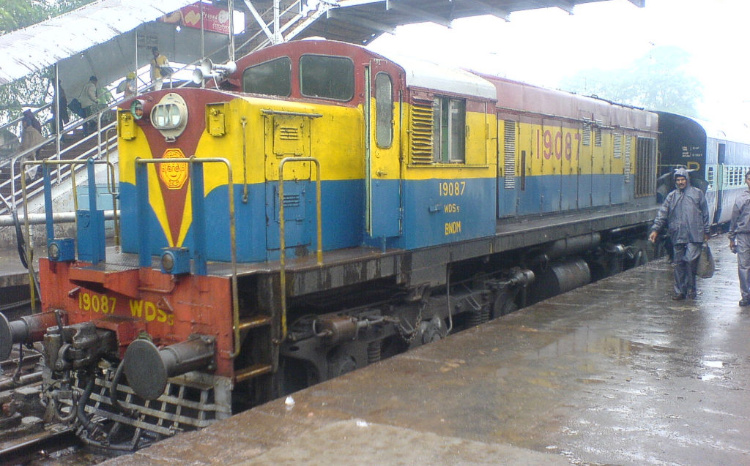
| Builders | ALCo, DLW |
| Engine | ALCo 251B, 6 cylinder, 1065hp with ALCo 320F turbocharger. 1025rpm max, 375rpm idle; 228mm x 266mm bore/stroke; compression ratio 12.5:1. Direct fuel injection, centrifugal pump cooling system (1266/min @ 1025rpm), fan driven by eddy current clutch (45hp @ engine rpm 1025) |
| Governor | Woodward |
| Transmission | Electric, GE GT551E2 generator (1050rpm, 965V, 2500A) |
| Traction Motors | GE 752E6 |
| Horsepower | 1065hp (994hp site rating) |
| Axle Load | 21t |
| Bogies | ALCo trimount Co-Co |
| Weight | 126t |
| Starting TE | 31.5 tons at 25% adhesion |
| Max. Speed | 109km/h |
| Length Over Buffers | 16322mm |
Heavy-haul shunters made originally for industrial customers, but has since become the most common type of diesel shunter on IR. First produced in 1975. 6-cylinder 4-stroke incline ALCo 251B engine from the YDM-4 mated to the Co-Co trimount bogie and under-frame from WDM-2. 1400hp gross. Max. speed 62.5km/h (though can be updated to 71km/h using 65:18 gearing). Several of them have a so-called 'creep control' system which allows them to be operated at a sustained speed of between 1 to 7 km/h for hauling special or heavy loads. Initial production was by DLW, though in the past decade or so, the Parel Workshops on CR have also been making them from kits supplied by DLW.
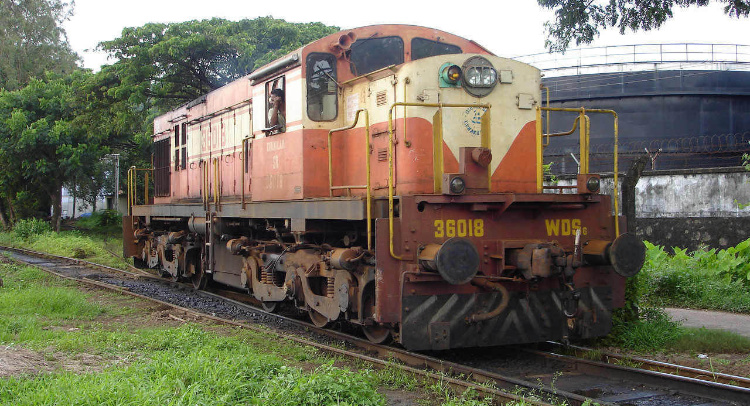
The first ten were numbered #19459-#19468 but later renumbered as they were all allocated to public-sector industrial concerns. (The same numbers were later allotted to WDS-4 units.) Units built for IR were numbered 36000 and above. Given the large numbers and length of time in which they were produced, there are a few variants, the most significant among them, the WDS-6AD featuring AC-DC transmission, high adhesion bogies, shell like WDM-3D etc. (more below). WDS-6R are thought to be old WDM-2, but fitted with the smaller 6-cylinder engine, AC-DC transmission, 'creep control' etc. and re-classified.
In 2008, RDSO briefly examined building this class with a Cummins KTA 50L engine to reduce costs and help smaller workshops produce them, but nothing seems to have come out of it.
Variants
WDS-6AD: The most significant variant of the WDS-6. These are lighter by 13t over the original, but have higher adhesion capabilities due a revised bogie. AC-DC traction, microprocessor controlled governor and other diagnostics, cab and shell design like the WDM-3D. Some recent units have an auxiliary power unit. Other WDM-3D like features: larger fuel tank, sandboxes, solid cow catcher and air reservoirs. Many also feature full length grab rails along both hoods.
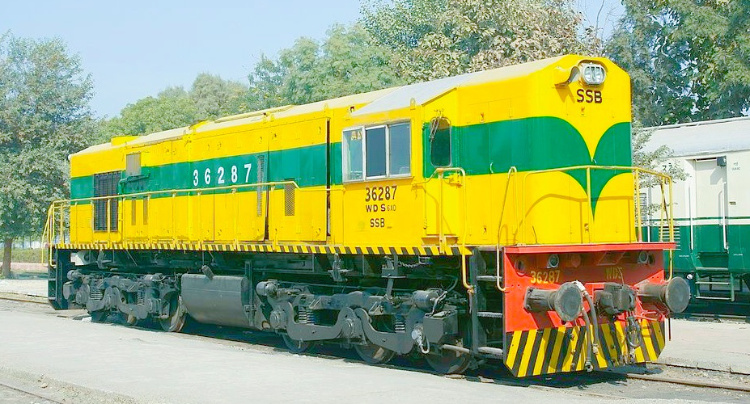
| Builders | DLW, Parel Workshops |
| Engine | ALCo 251D, inline 6 cylinder, 1400hp with ALCo 350F turbocharger. 1100rpm max, 400rpm idle; 228mm x 266mm bore/stroke; compression ratio 12.5:1. Direct fuel injection, centrifugal pump cooling system (1360/min @ 1100rpm), fan driven by eddy current clutch (41.5hp @ engine rpm 1100) |
| Governor | Woodward |
| Transmission | Electric, BHEL TG10919AZ generator |
| Traction Motors | BHEL 165 |
| Horsepower | 1400hp (1300hp site rating) |
| Axle Load | 21t |
| Bogies | Co-Co |
| Weight | 126t |
| Starting TE | 34 tons at 27% adhesion |
| Max. Speed | 62.5km/h |
| Length Over Buffers | 15920mm |
'C'='Converted'. These were MG locomotives (YDM-4) converted by Golden Rock Workshops to broad gauge by swapping in BG bogies and underframes. The power-pack, radiator, generator, and electrical controls are retained from the MG loco; new water and air lines were added. The modified engines have an improved control stand and a dual-brake system. These locos are targeted at large industrial concerns. The first one was delivered on April 1, 2009 by Golden Rock to RITES. It is not known whether more were produced or if later versions were rebadged as WDS-6R (as mentioned above).
Only five of these were made, and all were transferred to SAIL (Steel Authority of India Ltd.) and have no IR numbers. MaK 800hp diesel engine. Bo-Bo, DC-DC traction. 22t starting TE. Made between 1979 and 1982. Short full-width cab and single long, narrow hood. The cab appears to have been the same design as used for some of CLW's electric locos. All of them have been scrapped.
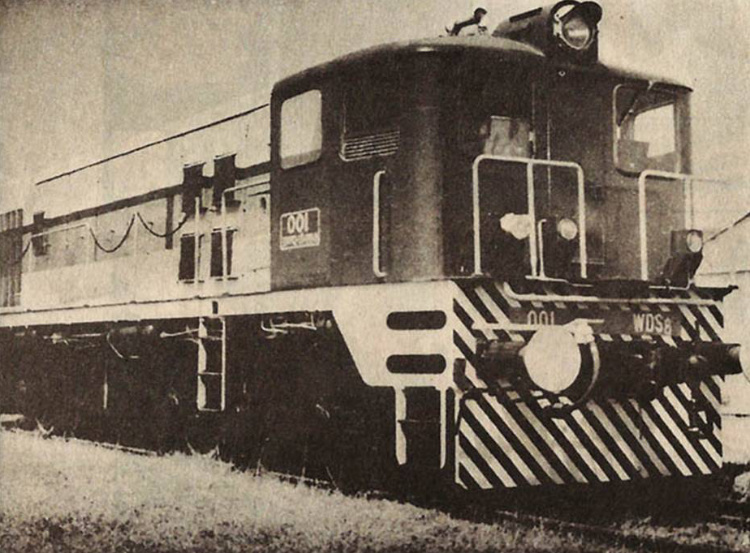
Variants
DLW built a few low-power (250 hp??) diesel-hydraulic works shunters for use at ICF, CLW, and DLW. Three were built for BG in 1966-67, and two more with the same equipment for MG in 1967 or so. Of the two MG units, one was later converted to BG. It is unknown whether there was another MG unit which would account for a skip in serial numbers. #19053 was used at DLW itself, #19054 at ICF, and #19055 at CLW.
For details on metre gauge and narrow gauge diesel locomotives, please see this page.
